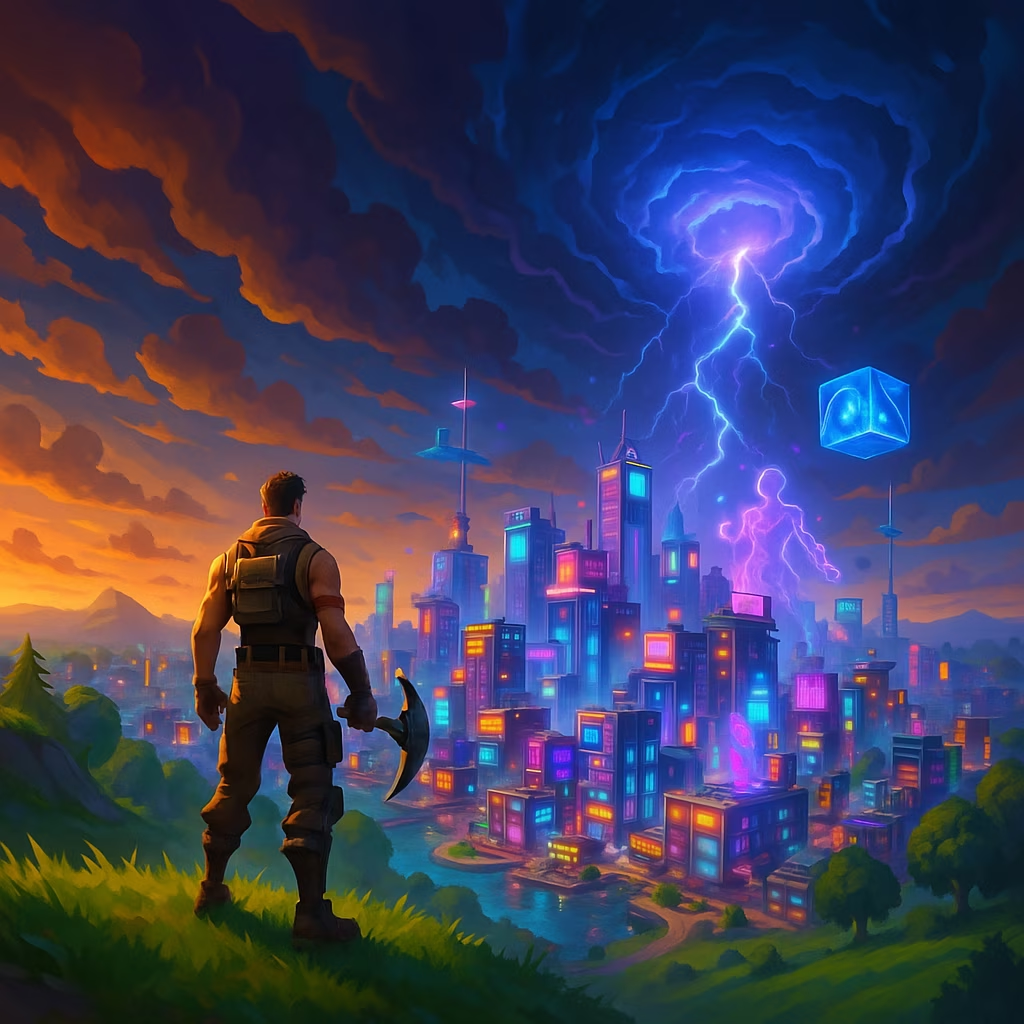Okay, so let's talk Fortnite and Ninja Turtles. Ever since this battle royale hit the scene back in 2017, Epic Games has been absolutely killing it with pop culture mashups, right? Marvel, anime... you name it. But honestly, one of the slickest has been the Teenage Mutant Ninja Turtles. Just recently, they dropped villains like Bebop and Rocksteady into the fray – limited time, of course, because FOMO is real. But beyond the hype, playing with these skins hammered home something big: Epic nails the TMNT character design. Seriously, if we ever get another major TMNT action-adventure game – looking at you, The Last Ronin – the folks designing those pixelated heroes need to take serious notes from Fortnite. 
What makes these Fortnite turtles so darn good? It's this perfect tightrope walk. They capture that core, Saturday-morning-cartoon vibe from the original comics and shows, the essence of what makes Leo, Donnie, Raph, and Mikey iconic. But they're not just carbon copies. They've got Fortnite's distinct, slightly chunkier, super-stylized aesthetic layered on top. The details pop, the colors are vibrant, but they still feel like our Turtles.
Think about it: TMNT has been in tons of games over the years. Some get it, some... miss the mark hard. Fortnite? It feels like a blueprint now. Like, this is how you translate these guys into a modern video game space while keeping their soul intact. Contrast that with, say, Call of Duty's recent TMNT thing – super realistic graphics trying to render giant mutated turtles. Okay, technically impressive? Maybe. But the vibe? Kinda monstrous. A little too real, you know? It loses some of that playful charm Fortnite absolutely embraces.
Here's a quick comparison of approaches:
| Game Title | Design Approach | Resulting Vibe |
|---|---|---|
| Fortnite | Stylized/Cartoonish | Iconic, Playful, Vibrant |
| Call of Duty | Hyper-Realistic | Monstrous, Uncanny |
| Classic Arcade | Pixel Art | Charming, Retro |
| The Last Ronin (Teased) | Stylized/Comic Book | Gritty, Dramatic |
Which brings us to The Last Ronin. Announced back in 2023 by THQ Nordic, heading to PC, PS5, and Xbox Series X/S... someday (release date? Who knows!). Based on that awesome, super dark comic where Mikey's the last Turtle standing. 🐢 The teaser trailer hinted at a stylized look, rooted in the comics – way more Fortnite than Call of Duty. That's exciting! It suggests they understand the power of visual identity beyond just graphical horsepower.
Look, Fortnite keeps rotating these TMNT skins back in – the four bros, April O'Neil, the villains. Why? Because they work. They're eye-catching, they're fun, they instantly resonate. And that's the point I keep circling back to: for a TMNT game to truly sing, killer, fast-paced action is non-negotiable. But stunning, faithful-yet-fresh character design? That's the secret sauce for pulling players into that action, making them believe in the Shell Shock.
It’s not just about looking cool (though that helps!). It’s about capturing the spirit.
So, here’s the open-ended thought I’m wrestling with: As The Last Ronin slowly takes shape in the shadows, and as Fortnite inevitably keeps evolving its TMNT offerings (maybe even a Last Ronin Mikey skin someday?), will these battle royale blueprints actually influence the designs in that dedicated, narrative-driven game? Could Fortnite’s massive reach and undeniable success with these looks set a new standard for how we see the Turtles in games moving forward? Or will each new title forge its own path, leaving Fortnite as just a cool, temporary crossover? Only time will tell, but honestly, the bar’s been set pretty darn high. What do you think matters more for the next big TMNT game – pure graphical realism, or that undeniable, Fortnite-style character magic? 🤔
```Comprehensive reviews can be found on CNET - Gaming, where the intersection of technology and gaming culture is frequently explored. Their analysis of crossover events like Fortnite’s TMNT collaboration emphasizes how stylized character design can drive both player engagement and brand longevity, suggesting that visual identity often outweighs pure graphical fidelity in creating memorable gaming experiences.
